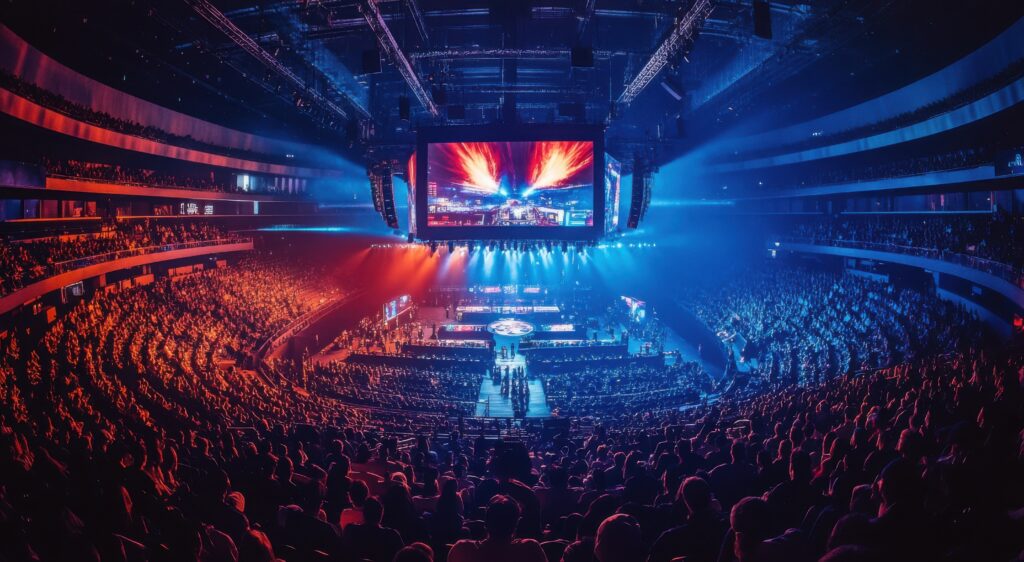Signiant Technology at the 2018 Winter Games in South Korea
How Signiant Technology Moves Media for the Winter Games and Other Major Sporting Events
Since their inception, the Summer and Winter Games have endeavored to transcend linguistic and cultural differences through the universal love of sport. However, they haven’t always been the global affair that they are today. The first modern games in 1896 only included 14 nations. Today, 206 countries have official organizing committees to support the Winter and Summer Games. And, while not all nations have athletes at every games, all nations have people who watch.
The opening ceremony in PyeongChang on Friday, February 9, 2018, will include a parade of 93 nations carrying their flags, and are expected to be viewed by millions around the world. Before the closing ceremony on February 25, viewership will likely build into the billions.
Since the London Games in 2012, consumption of content for the Winter and Summer Games has surged with the spread of digital devices. According to the International Olympic Committee, the 2016 Games in Rio were the most consumed Games ever, when “half the world’s population watched the coverage,” there were “over 7 billion video views of official content on social media platforms.”
The Winter and Summer Games are not alone in that trend. From the FIFA World Cup, Super Bowl and the Ryder Cup, to World Rugby Limited, Daytona 500 and the French Open, media coverage and engagement continues to rise. For all those sports events and others — by international committees, broadcasters and local networks — Signiant technology works behind the scenes to bring video content to the billions.
The Technical Challenges of Covering Major Sports Events
Media coverage for a major sports event, from the live action to archives, requires layers of technology and talent at every stage. Signiant’s secure, accelerated file transfer solutions come into play as soon as recording begins and are used throughout the life of media files.
Greg Hoskin, Signiant’s managing director of the European and Asia-Pacific regions, understands Signiant’s place in the process better than anyone. With nearly 30 years in the industry, he’s witnessed the transition from tape to file-based workflows and has been instrumental in helping broadcasters meet the increasing operational challenges of today’s media landscape.
“The demand placed on broadcasters’ technology infrastructures during a global sports event like the Winter Games is extreme,” says Hoskin. “Terabytes of video content need to be transferred all around the world. At no other time is security, speed, user experience, and reliability more important.”
Hoskin works closely with several of the biggest broadcasters in Europe who use one or all three of Signiant’s solutions. Generally, Signiant technology is sought out for its speed, reliability, superior user experience and high security when sending large files over IP networks, especially over distance. The three products in Signiant’s simple yet powerful product portfolio specialize in a few key areas:
- System-to-system file movement with Manager+Agents
- Person-initiated file movement with Media Shuttle
- And file movement into and out of cloud storage with Flight
Many broadcasters use all three in different ways depending on the need. Here are a few examples that illustrate their use during a major sports event like the 2018 Winter Games.
International Broadcasters: Quality Control and Global Distribution
Most major sports events typically have one or more main broadcasters covering a range of responsibilities, including project manage the entire event, ensure quality control for facilities at all venues, and deliver unbiased footage to billions of viewers around the world. They produce live coverage of every sport and every race or performance, and transmits a feed as a service to rights-holding broadcasters.
“Major sports broadcasters have an enormous responsibility to everyone involved in the event.” says Hoskin. “Knowing that they trust our solutions for their global workflows during events like the Winter Games is a point of pride for all of us at Signiant.”
Broadcasters can spend years planning for an event the size of the games, and two of Signiant’s accelerated file transfer solutions are critical in preparing for both the massive global workflows that are known upfront and the unknowable number of requests for specific short and long-form content files.
Manager+Agents for Automatically Transferring Captured Footage Across Three Locations
Throughout a major sports event, every race or performance is recorded locally. At the same time, everything is synced back to a central repository (often halfway around the world) and to the main broadcaster’s headquarters. Manager+Agents is used to automatically sync files quickly and securely between all three locations, providing lights out, rules-based, or automated global content distribution from a centralized control.

Media Shuttle for Specific Content Requests and Temporary Staff
Media Shuttle, in this case, is used for ad hoc requests for content when human intervention is required. For example, if a rights-holding broadcaster puts in a request for a specific event, like “please send me alpine skiing, heat number 53,” or even a specific moment, like “please send me that clip of Mikaela Shiffrin just realizing she’s won the gold.” A media manager would use a Media Shuttle send portal to send the file directly to that person, wherever they are in the world.
Media Shuttle is also especially useful when additional staff and freelancers are brought on, a common practice for all major sports events. With browser-based portals that require no training to use, a SaaS pricing model that insures budget efficiency, and a cloud architecture that automatically scales to production demand, Media Shuttle fits the needs of high volume, high demand broadcast events that only come around a few times a year, or less.
Rights-Holding Broadcasters: Growing Files, Regional Distribution and Remote Crews
Depending on the country or region, there may be one or several broadcasters that own rights to televise and capture footage at an international sports event like Winter Games or World Cup. Rights-holding broadcasters not only receive the general feed, they also run unilateral production coverage.
Large Scale Manager+Agents Deployment into Multiple Countries and Production Locations
International sports broadcasters often have teams geographically separated but working on the same production. They not only need to capture all the footage and get it back to a central hub in their home territory, they then need to distribute it to regional broadcasters (for example, across all the countries in Europe) based on negotiations they’ve made for distribution rights. For this purpose, a complex, rules-based Manager+Agents deployment is used, bringing content back from the event location and then out to multiple locations across the region.
When Everything is Live, and Turnaround Time is a Factor
The hours of live footage from a major sports event can reach well into the thousands. For this year’s Games, NBC alone is planning to set a record of 1,800 hours. Footage from exciting races or performances draw huge demand, both during evening highlights and on social media. Regional and national broadcasters commonly use Manager+Agents growing file support in order to start transferring files while they are still being written to storage, and get footage back from the games and turned around as quickly as possible.
“With thousands of hours of live footage being produced at major sports events, features like Growing File support become essential to broadcasters needing to quickly capture and distribute content around the world.”
Collaborating with Multiple Remote Crews and Freelancers
Media Shuttle can come into play in a slightly different way when multiple remote crews and freelancers need to collaborate. Media Shuttle is very easy to set up as a collaborative repository. Remote crews and freelancers can access a share portal from any location and use auto delivery to quickly and securely get content back to headquarters for archiving. Media Shuttle scales to any file size without the need for compression or quality compromise.

Organizing Committees: Acquisition Crews and Historical Archives
Major global sports events like the Summer and Winter Games and FIFA World Cup have organizing committees responsible for housing historical archives of media coverage gathered by officially sanctioned acquisition crews.
Flight Addition for Fast Automatic Uploads, Archiving
Official camera operators shoot content across the entire host city. Where archiving is the concern, both remote acquisition crews and managers at headquarters want the easiest, fastest and most reliable means to get finished content organized and securely into archives. In this case, all three Signiant solutions are used.
Onsite camera operators have a Media Shuttle auto delivery folder on their laptops. Once they’ve gone through what they’ve shot and decided what they want to publish, they add all the files to the folder. Then, the next time they’re on wifi, it automatically syncs to a master folder in a Media Shuttle share portal, which is connected to AWS cloud storage via Signiant Flight (IT handles the easy setup of storage for portals, either cloud or on-premises, so photographers never have to think about storage).
“Production teams love the intuitive design of Media Shuttle because they don’t have to train anyone to use it. It just works and everyone is happy,” says Hoskin. “It has been a singularly phenomenal success for events like the Winter Games.”
From there, Manager+Agents automatically picks up any new content in the master folder and dumps it into their headquarters countries away. Utilizing Signiant and the cloud for distributed ingest improves file transfer efficiency, and avoids gridlock and connectivity costs at headquarters.
Reversing the Workflow for Content Requests from Historical Archives
As you can imagine, official historical archives for events like the Winter Games are huge and valuable. Organizing committees have MAM systems where broadcasters can view and select content online, and order the content clips they require. A reverse of the process used to archive content is used to send these requested clips from official archives.
Essentially, once the order has been placed, Manager+Agents receives an instruction to package up content (file format, transcoding, rewrapping, topping and tailing of the file) and triggers a Flight upload to AWS cloud storage. Then Manager+Agents instructs Media Shuttle to deliver it to the broadcaster.
“Utilizing Flight as an intermediary between Media Shuttle and Manager+Agents for content ingest or distribution is the most efficient solution for large scale, global content movement available today.”
Signiant’s Simple Yet Powerful Portfolio is Designed for Major Sports Media Productions

From international broadcasters to historical archivists, those that are responsible for bringing the athletes, performances, races and ceremonies from major events like the Winter Games need the best technology available. Signiant Manager+Agents has long been a cornerstone for large broadcast companies to automate file movement between their locations. With the addition of Media Shuttle and Flight, SaaS solutions that scale to the needs of short, high volume production demands, Signiant has become the choice architecture for global sports event operations.



